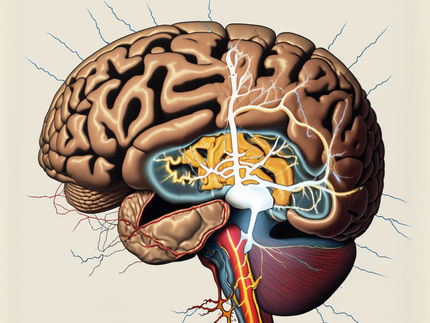How star-shaped cells increase flexible learning
Researchers solve the hidden mystery of the role of astrocytes in learning processes and memory in the brain
Star-shaped glial cells, so-called astrocytes, are more than just a supporting cell of the brain. They are actively involved in learning processes and interact with the nerve cells. But what exactly is it that astrocytes do? Researchers at the University Hospital Bonn (UKB) and the University of Bonn are using a biophysical model to clarify how astrocytes interact with nerve cells to regulate rapid adaptation to new information. The results of the study have now been published in the journal "Nature Communications Biology".
In the brain, synaptic plasticity - the ability to change neuronal connections over time - is fundamental to learning and memory. Traditionally, science has focused on nerve cells and their synapses. The discovery of intracellular Ca2+ signaling in astrocytes led to the idea that astrocytes are more than a glue holding the brain together and play a crucial role in this process. "Astrocyte dysfunction can significantly impair our ability to learn, highlighting their importance in cognitive processes. However, the exact functions of astrocytes have long remained a mystery," says corresponding and co-senior author Prof. Tatjana Tchumatchenko, research group leader at the UKB's Institute for Experimental Epileptology and Cognition Research and member of the Transdisciplinary Research Area (TRA) "Modeling" at the University of Bonn, describing the motivation for pursuing this question.
Unraveling the intricate dance of cellular interactions during learning
"Our work as computational neuroscientists is to use the language of mathematics to interpret the experimental observations and build coherent models of the brain," says co-senior author Dr. Pietro Verzelli, a postdoctoral fellow in Prof. Tchumatchenko's group. In this case, the researchers developed a biophysical model of learning based on a biochemical feedback loop between astrocytes and neurons recently discovered by Dr. Kirsten Bohmbach, Prof. Christian Henneberger and other researchers at the DZNE and UKB.
The biophysical model explains the learning deficits observed in mice with impaired astrocytic regulation and highlights the crucial role that astrocytes play in rapid adaptation to new information. By regulating levels of the neurotransmitter D-serine, astrocytes can facilitate the brain's ability to efficiently adapt and rewire its synaptic connections. "Our mathematical framework not only explains the experimental observations, but also provides new testable predictions about the learning process," says first author Lorenzo Squadrani, a PhD student in Tchumatchenko's group.
This research bridges the gap between theoretical models of plasticity and experimental findings on the interactions between neurons and glial cells. It highlights astrocytic regulation as the physiological basis for dynamic synaptic adaptations, a central concept of synaptic plasticity. "Our findings contribute to a better understanding of the molecular and cellular mechanisms underlying learning and memory and provide new opportunities for therapeutic interventions targeting astrocytes to improve cognitive functions," says Prof. Tchumatchenko.
Original publication
Most read news
Original publication
Lorenzo Squadrani, Carlos Wert-Carvajal, Daniel Müller-Komorowska, Kirsten Bohmbach, Christian Henneberger, Pietro Verzelli, Tatjana Tchumatchenko; "Astrocytes enhance plasticity response during reversal learning"; Communications Biology, Volume 7, 2024-7-12
Topics
Organizations
Other news from the department science

Get the life science industry in your inbox
By submitting this form you agree that LUMITOS AG will send you the newsletter(s) selected above by email. Your data will not be passed on to third parties. Your data will be stored and processed in accordance with our data protection regulations. LUMITOS may contact you by email for the purpose of advertising or market and opinion surveys. You can revoke your consent at any time without giving reasons to LUMITOS AG, Ernst-Augustin-Str. 2, 12489 Berlin, Germany or by e-mail at revoke@lumitos.com with effect for the future. In addition, each email contains a link to unsubscribe from the corresponding newsletter.























































